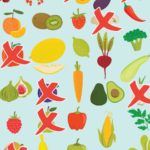Delicious & Healthy Recipes: A Culinary Journey to Wellbeing
This comprehensive guide dives deep into the world of delicious and healthy recipes, offering a diverse range of options catering to various dietary needs and preferences. We’ll explore vibrant vegetables, lean proteins, whole grains, and healthy fats, transforming them into mouthwatering meals that fuel your body and delight your palate. From quick weeknight dinners to leisurely weekend brunches, these recipes are designed to be accessible and enjoyable for cooks of all skill levels.
Embracing the Rainbow: The Power of Colorful Vegetables
Vegetables are the cornerstone of a healthy diet, packed with vitamins, minerals, and fiber. Let’s explore some simple yet effective ways to incorporate a rainbow of colors into your meals:
-
Roasted Vegetable Medley: This versatile dish is a fantastic way to use up whatever vegetables you have on hand. Toss broccoli florets, bell peppers (red, yellow, orange), zucchini, and red onion with olive oil, herbs like rosemary and thyme, salt, and pepper. Roast at 400°F (200°C) for 20-30 minutes, or until tender and slightly caramelized. This can be served as a side dish or as a base for a grain bowl.
-
Spinach and Artichoke Dip (Healthy Version): Ditch the heavy cream and mayonnaise! Blend steamed spinach, artichoke hearts (canned or fresh), Greek yogurt (for creaminess and protein), garlic, lemon juice, and a touch of Parmesan cheese. Serve with whole-wheat pita chips or raw vegetable sticks.
-
Cucumber Salad with Dill and Vinegar: A refreshing and hydrating salad perfect for hot days. Thinly slice cucumbers and red onion. Toss with fresh dill, apple cider vinegar (or white wine vinegar), olive oil, salt, and pepper. Let it sit for at least 15 minutes to allow the flavors to meld.
-
Sweet Potato Fries with Chipotle Aioli: A healthier alternative to traditional fries. Cut sweet potatoes into fries, toss with olive oil, paprika, and a pinch of cayenne pepper. Roast at 400°F (200°C) for 25-30 minutes, flipping halfway through. For the aioli, whisk together Greek yogurt, chipotle peppers in adobo sauce (finely chopped), garlic, and lime juice.
Lean Proteins: Fueling Your Body with Building Blocks
Protein is essential for building and repairing tissues, supporting immune function, and keeping you feeling full. Here are some delicious ways to enjoy lean protein sources:
-
Baked Salmon with Lemon and Herbs: Salmon is rich in omega-3 fatty acids. Season salmon fillets with salt, pepper, lemon slices, and fresh herbs like dill or parsley. Bake at 375°F (190°C) for 12-15 minutes, or until cooked through. Serve with roasted asparagus or quinoa.
-
Chicken Stir-Fry with Vegetables: A quick and easy weeknight meal. Cut chicken breast into bite-sized pieces and stir-fry with your favorite vegetables (broccoli, snap peas, carrots, bell peppers) and a flavorful sauce made with soy sauce (low-sodium), ginger, garlic, and a touch of honey or maple syrup. Serve over brown rice.
-
Lentil Soup: Lentils are a powerhouse of protein and fiber. Sauté onions, carrots, and celery. Add lentils, vegetable broth, diced tomatoes, and spices like cumin, coriander, and turmeric. Simmer until the lentils are tender (about 30-40 minutes).
-
Turkey Burgers on Whole-Wheat Buns: Ground turkey is a leaner alternative to ground beef. Mix ground turkey with breadcrumbs (whole-wheat preferred), chopped onion, garlic, and seasonings. Form into patties and grill, bake, or pan-fry. Serve on whole-wheat buns with your favorite toppings.
Whole Grains: The Foundation of Sustainable Energy
Whole grains provide sustained energy, fiber, and essential nutrients. Incorporating them into your diet is crucial for overall health.
-
Quinoa Salad with Black Beans and Corn: Quinoa is a complete protein. Cook quinoa according to package directions. Combine cooked quinoa with black beans, corn, chopped bell peppers, red onion, cilantro, lime juice, and olive oil.
-
Oatmeal with Berries and Nuts: A classic breakfast that provides sustained energy. Cook rolled oats with water or milk. Top with fresh or frozen berries, a sprinkle of nuts (almonds, walnuts), and a drizzle of honey or maple syrup (optional).
-
Brown Rice Bowls with Chicken and Vegetables: Brown rice offers a nutty flavor and more fiber than white rice. Cook brown rice. Top with grilled or baked chicken, roasted vegetables, and a flavorful sauce like tahini dressing or teriyaki.
-
Whole-Wheat Pasta with Marinara and Vegetables: Choose whole-wheat pasta for added fiber. Cook pasta. Toss with marinara sauce (check for added sugar), sautéed vegetables (mushrooms, zucchini, spinach), and a sprinkle of Parmesan cheese (optional).
Healthy Fats: The Essential Building Blocks for a Healthy Body
Healthy fats are crucial for brain function, hormone production, and the absorption of fat-soluble vitamins.
-
Avocado Toast with Everything Bagel Seasoning: Mash avocado and spread it on whole-grain toast. Sprinkle with everything bagel seasoning and a pinch of red pepper flakes.
-
Salmon with Avocado Salad: Cook salmon using your preferred method (baking, grilling, pan-frying). Serve with a salad made with avocado, tomatoes, red onion, and a light vinaigrette dressing.
-
Homemade Salad Dressings with Olive Oil: Ditch the store-bought dressings, which can be high in sugar and unhealthy fats. Make your own vinaigrette with olive oil, vinegar (balsamic, red wine, apple cider), Dijon mustard, and herbs.
-
Trail Mix with Nuts, Seeds, and Dried Fruit: A great snack to satisfy cravings. Combine nuts (almonds, walnuts, cashews), seeds (sunflower, pumpkin), and dried fruit (cranberries, raisins) in a container. Be mindful of portion sizes.
Tips for Success:
-
Plan Your Meals: Meal planning is key to making healthy eating a sustainable habit. Plan your meals for the week, create a grocery list, and shop accordingly.
-
Prep Your Ingredients: Chop vegetables, cook grains, and pre-portion snacks to save time during the week.
-
Read Food Labels: Pay attention to serving sizes, ingredients, and nutrition facts to make informed choices.
-
Experiment with Spices and Herbs: They add flavor and depth to your dishes without adding extra calories or sodium.
-
Cook at Home More Often: Eating at home allows you to control the ingredients and preparation methods, making it easier to eat healthier.
-
Don’t Be Afraid to Experiment: Try new recipes, cuisines, and ingredients to keep your meals interesting and exciting.
-
Listen to Your Body: Pay attention to how different foods make you feel and adjust your diet accordingly.
-
Stay Hydrated: Drink plenty of water throughout the day to support your overall health and well-being.
-
Be Patient and Persistent: Changing your eating habits takes time and effort. Don’t get discouraged if you slip up occasionally. Just get back on track with your next meal.
-
Make it a Lifestyle: Healthy eating should be a sustainable lifestyle, not a short-term diet. Focus on making small, gradual changes that you can maintain over the long term.





